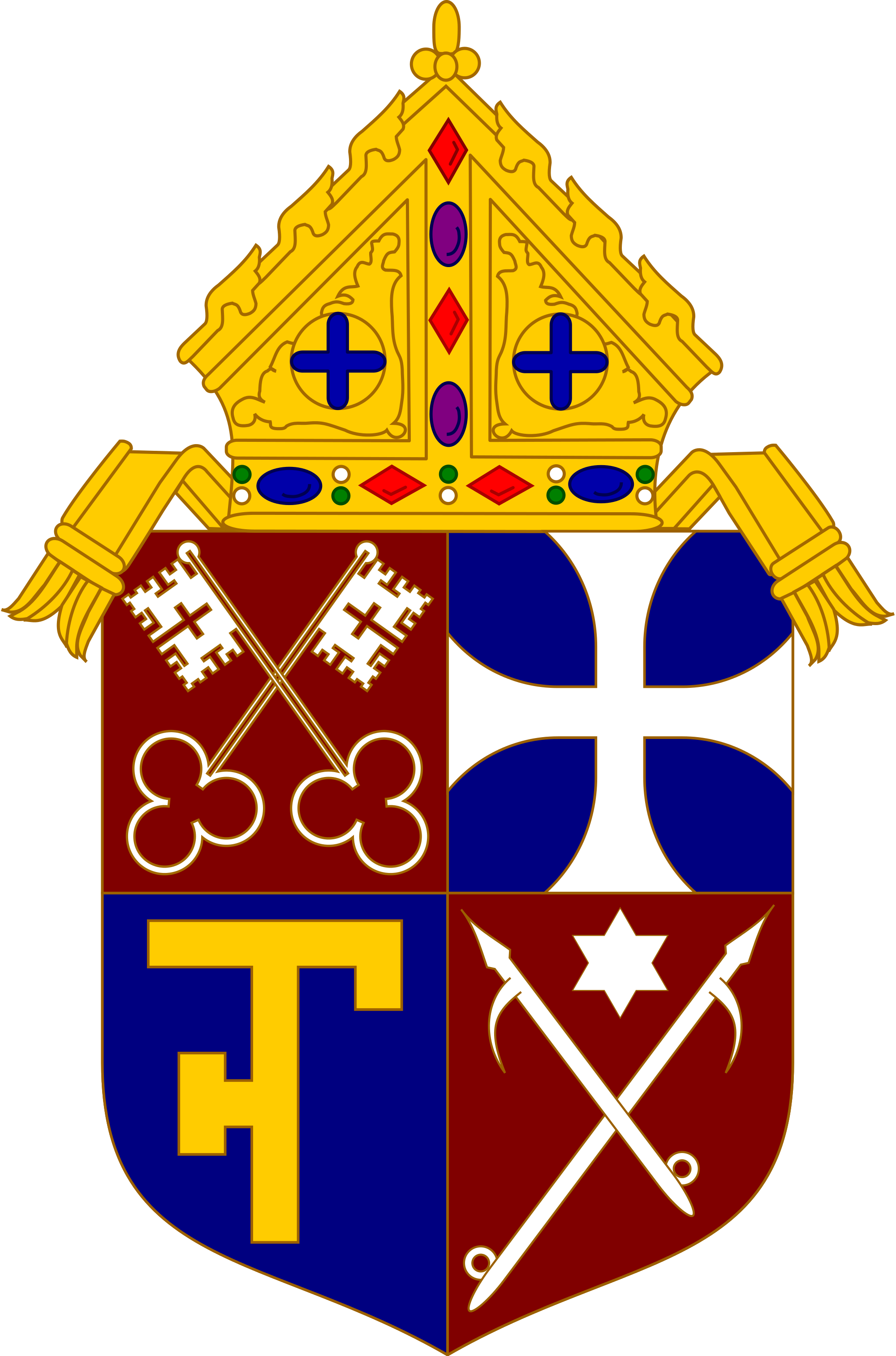Apostolic Vicariate of Northern Germany
The Apostolic Vicariate of the North was an Apostolic Vicariate of the Roman Catholic Church, the Reformation summed up their areas after the downfall of most North German Catholic dioceses. It was founded in 1667 and became extinct in 1929 with the Prussian Concordat.
History
During the Reformation came the repeal of most dioceses the episcopal jurisdiction in Northern Germany and Scandinavia to a halt. These areas, where no open practice of the Catholic faith more was possible, were referred to as the Nordic missions and assumed in 1622 the Congregation de Propaganda Fide in Rome. Now, while the Cologne nuncio received the necessary faculties for Northern Germany, the Warsaw nuncio to Sweden and Mecklenburg was assigned. The Brussels nuncio were conferred similar Faculties of Denmark and Norway. The gradual increase of Catholics numbers led in 1667 to the founding of the Apostolic Vicariate of the Nordic missions.
In the early years of Hannover became the seat of the Vicar Apostolic, who was directly responsible to the Cologne nuncio. Often, the Apostolic Vicar was also Bishop of another diocese, which did not facilitate the position.
First, there were few Catholic communities tolerated. Four of them were referred to as "privileged communities ":
- Altona ( by Count Adolf XI. Schauenburg 1598 )
- Friedrichstadt ( 1624)
- Gluckstadt (1645 )
- St. Theresa on North beach (1652, under the jurisdiction of the Vicar Apostolic in Utrecht until 1920 belonging to the Old Catholic Archdiocese of Utrecht)
In 1709 it came to a division. While the Danish and Swedish areas, as well as the former bishoprics of Bremen -Hamburg, Lübeck and Schwerin were now the Apostolic Vicariate of the North and were managed by the Osnabrück or Paderborn Auxiliary Bishops, took one the territories of Brunswick-Lüneburg and Brandenburg as Apostolic Vicariate of Upper and Lower Saxony together. At this the Apostolic Vicariate of the North was in 1721 still the duchies of Bremen and Verden.
At the beginning of the 18th century, the Vicariate counted 2,000 Catholics, about 20 missions, 6 men and 10 nunneries. The local pastoral care was primarily perceived by religious priests, especially Jesuits, Dominicans and Franciscans. In some places, such as Hanover, where the religious priests the work was prohibited, were diocesan priests ready for counseling.
As to the maintenance of the mission stations and missionaries brought donations of parishioners and most unique or time-limited grants of "propaganda" in Rome at. There were also larger private foundations by members of the imperial family, the Catholic imperial estates and nobles. So the mission of the Foundation of the Bishop of Paderborn could entertain no less than 36 missionaries in 15 mission stations.
The heterogeneous character of the communities of believers from different nations and social classes, as well as a high turnover, the pastoral care significantly more difficult. Even government regulations restricted the ministry. Since the Protestant rulers also against the Catholic subjects claimed the church's leadership, the resident usually outside the local area Vicars Apostolic were significantly impeded in their office. The perception jurisdictional rights was virtually impossible and Pontifikalhandlungen were often allowed only sporadically. In order to strengthen his authority, the Pope adopted a proposal Empress Maria Theresa, and in 1780 united the two curacies back to a large, whose direction the future held a ruling bishop.
After 1783 Sweden was separated (along with Norway) as a separate Vicariate, brought the secularisation of 1803 the Vicariate new difficulties. Were the financial losses already painful, cancellation of orders, which constituted nearly all pastors, to an existence question was. When Neuumschreibung the Catholic dioceses in Germany in 1824 were large areas of the Apostolic Vicariate of the Diocese of Hanover and Prussia. Although greatly reduced, the residual Vicariate comprised still Denmark, Schleswig -Holstein, Saxony -Lauenburg, Mecklenburg, Schaumburg -Lippe, the three Hanseatic cities of Hamburg, Bremen and Lübeck, Anhalt and Brunswick, which were, however, in 1834 excluded from the Vicariate.
1863 was granted to the Catholics in Holstein on the assembly of the estates in Itzehoe religious freedom. The following year it was extended to the whole of Schleswig -Holstein. 1868 Schleswig- Holstein an Apostolic Prefecture, which in 1921 became the Diocese of Osnabrück allocated.
On August 7, 1868, the Apostolic Vicariate of Denmark was separated.
After a transitional period, mid-19th century, the auxiliary bishop, later Bishop of Osnabrück was entrusted with the administration of the Vicariate. In the course of the Concordat between the Holy See and Prussia in 1929 ( Prussia Concordat ) the territory of the North German missions was incorporated directly into the Diocese of Osnabrück. The Apostolic Vicariate was thus void.
Apostolic vicars
- Franz Wilhelm von Wartenberg (1645-1661) ( Bremen )
- Valerio Maccioni (1667-1676)
- Niels Stensen (1677-1686)
- Ferdinand von Fürstenberg (1680-1683) ( Bremen, Halberstadt, Magdeburg and the Mecklenburg duchies )
- Friedrich von Tietzen Gen. Schlüter (1687-1696)
- Jobst Edmund von Brabeck (1697-1702)
- Otto Wilhelm von Bronckhorst to Gronsfeld (1702-1713)
- Johann Hugo von Gärtz (1715-1716)
- Hyacinth Petit (1718-1719)
- Johann Friedrich Adolf von Horde (1722-1761)
- Franz Joseph of Gondola (1761-1774)
- Friedrich Wilhelm von Westphalen (1775-1789)
- Franz Egon of Fürstenberg (1789-1825)
- Johann Theodor Laurent (1839-1841)
- Henry Hubert Aloysius Voss (1899-1914) ( Provicar )
- Hermann Wilhelm Berning (1921-1930)










